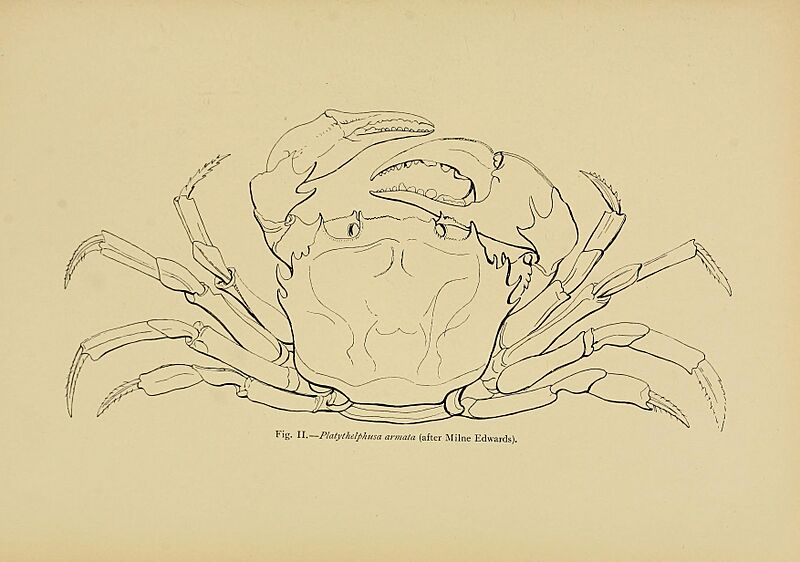Image: The Tanganyika problem; an account of the researches undertaken concerning the existence of marine animals in Central Africa (1903) (14587972137)

Description: Identifier: tanganyikaproble00moo (find matches) Title: The Tanganyika problem; an account of the researches undertaken concerning the existence of marine animals in Central Africa Year: 1903 (1900s) Authors: Moore, John Edward S Subjects: Zoology Marine animals Freshwater animals Publisher: London, Hurst and Blackett, limited Contributing Library: Smithsonian Institution Libraries Digitizing Sponsor: Biodiversity Heritage Library View Book Page: Book Viewer About This Book: Catalog Entry View All Images: All Images From Book Click here to view book online to see this illustration in context in a browseable online version of this book. Text Appearing Before Image: lication of marginal spines, we have an indication of greater specializationthan that met with in Thelphusa, an indication contrary to the tendency of theother evidence. The other possible explanation, then, that a reduction towards theextreme condition of Thelphusa is in progress, would seem far more probable ; andit is a noticeable fact that the marine and littoral Crabs, from which we may supposethis form has been derived by comparatively slight modifications, are far morespinous than any of the modern terrestrial or fluviatile forms. Thus, while Platy-tlielphusa and Limnothelphusa would appear to be the most primitive of these OldWorld genera, Parathelphtisa, in the less pronounced arching of the carapace andthe more numerous lateral spines, would come as intermediate between them andthe most specialized condition of Thelphusa. On the causes which have contributed to the present-day distribution of thesegenera, a word or two may be said. It is no very recent conception that .Mada- Text Appearing After Image: 286 THE TANGANYIKA PROBLEM. gascar and, llirDUgh this island, iho south of Africa itself, was jK-rliaps at someremote period connected in a tolerably close manner with India. The presentfauna of Madagascar, which shows marked Oriental affinities, l>ears this out ; andfrom considerations of geological facts, particularly as regards the possession of acommon flora in Carboniferous times, IJlanford, following Suess and Neumayr, isinclined to regard the idea of a great continent, embracing Australia, India andSouth Africa, as by no means improbable. The evidence for such a land-connec-tion is not confined to beds of quite such ancient date, however, for f)olh inJurassic and Cretaceous times the fauna of the two areas is distinctly suggestive ofthe same continuity. If, then, we may imagine the ancestral Thelphiisa as living onthe shores of this early continent, in which the present Lake Tanganyika wasrepresented as a narrow bay or fiord, it is not unreasonable to suppose that whileLinin Note About Images Please note that these images are extracted from scanned page images that may have been digitally enhanced for readability - coloration and appearance of these illustrations may not perfectly resemble the original work.
Title: The Tanganyika problem; an account of the researches undertaken concerning the existence of marine animals in Central Africa (1903) (14587972137)
Credit: https://www.flickr.com/photos/internetarchivebookimages/14587972137/ Source book page: https://archive.org/stream/tanganyikaproble00moo/tanganyikaproble00moo#page/n375/mode/1up
Author: Moore, John Edward S
Permission: At the time of upload, the image license was automatically confirmed using the Flickr API. For more information see Flickr API detail.
Usage Terms: No known copyright restrictions
License: No restrictions
License Link: https://www.flickr.com/commons/usage/
Attribution Required?: No
Image usage
The following page links to this image:

